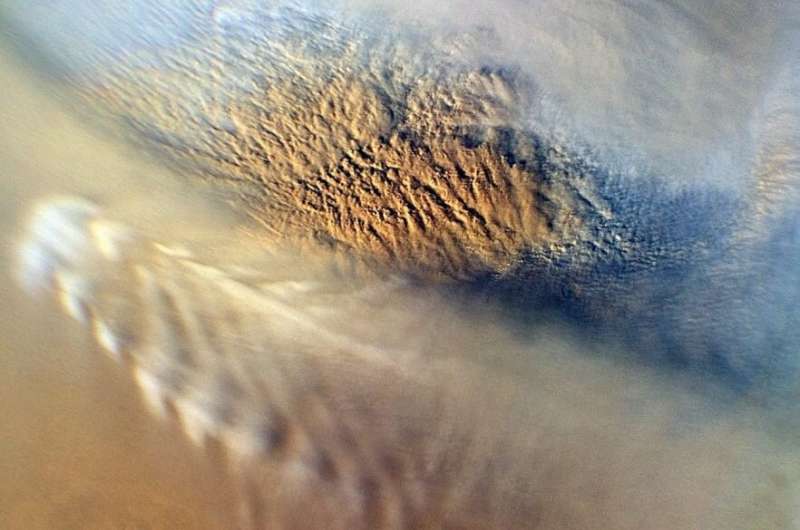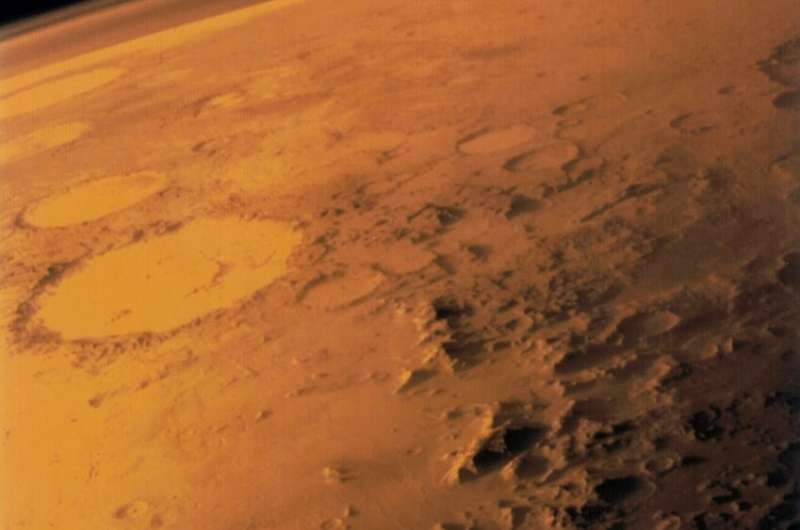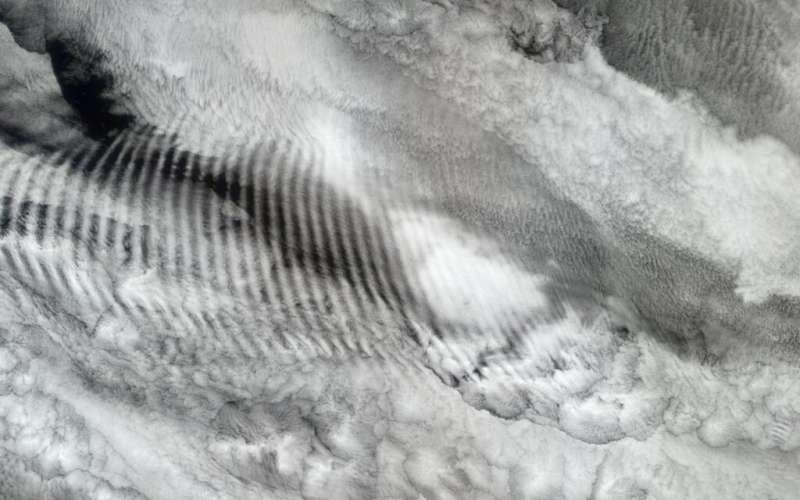Waves in thin air with broad effects

Mars has a very thin atmosphere, with nearly one hundredth the density of ours on Earth, and gravity pulls with little more than one third of the strength we feel on our planet. As a result, dust storms can go global. For future missions to Mars, it is important to understand the planet's airy envelope and to forecast its moods.
A new study, led by Gabriella Gilli, of Instituto de Astrofísica e Ciências do Espaço (IA) and Faculdade de Ciências da Universidade de Lisboa (Ciências ULisboa), published in the Journal of Geophysical Research, may improve the way we describe and forecast the Martian weather. This study suggests that waves moving upwards across Mars' thin air, and caused by air perturbations, can have a strong impact on the atmosphere as a whole.
Understanding this process may explain some of the differences between what space missions have observed on the red planet and the computer simulations scientists are using to figure out how its atmosphere works.
Atmospheric gravity waves are small fluctuations in air density and temperature propagating through the atmosphere. They can be produced by a number of processes, like warm and cool air interactions, or the flow of air over mountains, all of them perturbing the stable layering of the atmosphere.
As these waves transport and release energy, they cause winds either to speed up, or to slow down to gentle breezes. Thus, they are known to have a role in the global atmospheric circulation on Earth, as well as on Mars and Venus.

"We focused on the comparison between our tridimensional simulations of the atmosphere and the observations by the instrument Mars Climate Sounder on board of Mars Reconnaissance Orbiter," says Gabriella Gilli. "The inclusion in the model of gravity waves produced by convection gives a plausible physical explanation for some of the remaining divergences between the observations and the simulations."
According to the present study, these waves seem to interact with the periodic oscillations of the atmosphere as a whole, named diurnal tides, caused by the contrast in temperature between day and night. On Mars, these tides are much stronger than on Earth due to its thin envelope.
The study shows that the impact of gravity waves on Martian diurnal tides tend to slow down the winds at altitudes above 50 km, more in accordance with what is in fact observed on Mars.
The authors used a tridimensional model developed by the Laboratoire de Météorologie Dynamique (LMD), in Paris. The model is continuously being updated towards a more faithful representation of the Martian climate. This work of Gilli's team is one of these updates.

It is a computer representation of gravity waves caused by convection. Their specific properties can be tuned while checking if the simulated weather output, namely wind speeds and density and temperature oscillations, get closer to the data registered by spacecrafts.
Gilli, who is an expert on the atmosphere of our next neighbour, Venus, says that models for these planets are a key to also understand the differences and similarities between these worlds and Earth, and to understand the evolution of our own planet.
"We will keep working on the climate models of our neighbouring planets and with new data coming from future missions like Exo-Mars and Mars2020," Gabriella Gilli says. "It is also crucial to apply these models to extra-solar planets similar to Earth, so that we can predict what we will be able to observe with the instruments planned for the coming years for the study of distant worlds."
More information: G. Gilli et al. Impact of Gravity Waves on the Middle Atmosphere of Mars: A Non‐Orographic Gravity Wave Parameterization Based on Global Climate Modeling and MCS Observations, Journal of Geophysical Research: Planets (2020). DOI: 10.1029/2018JE005873
Journal information: Journal of Geophysical Research
Provided by Instituto de Astrofísica e Ciências do Espaço





















